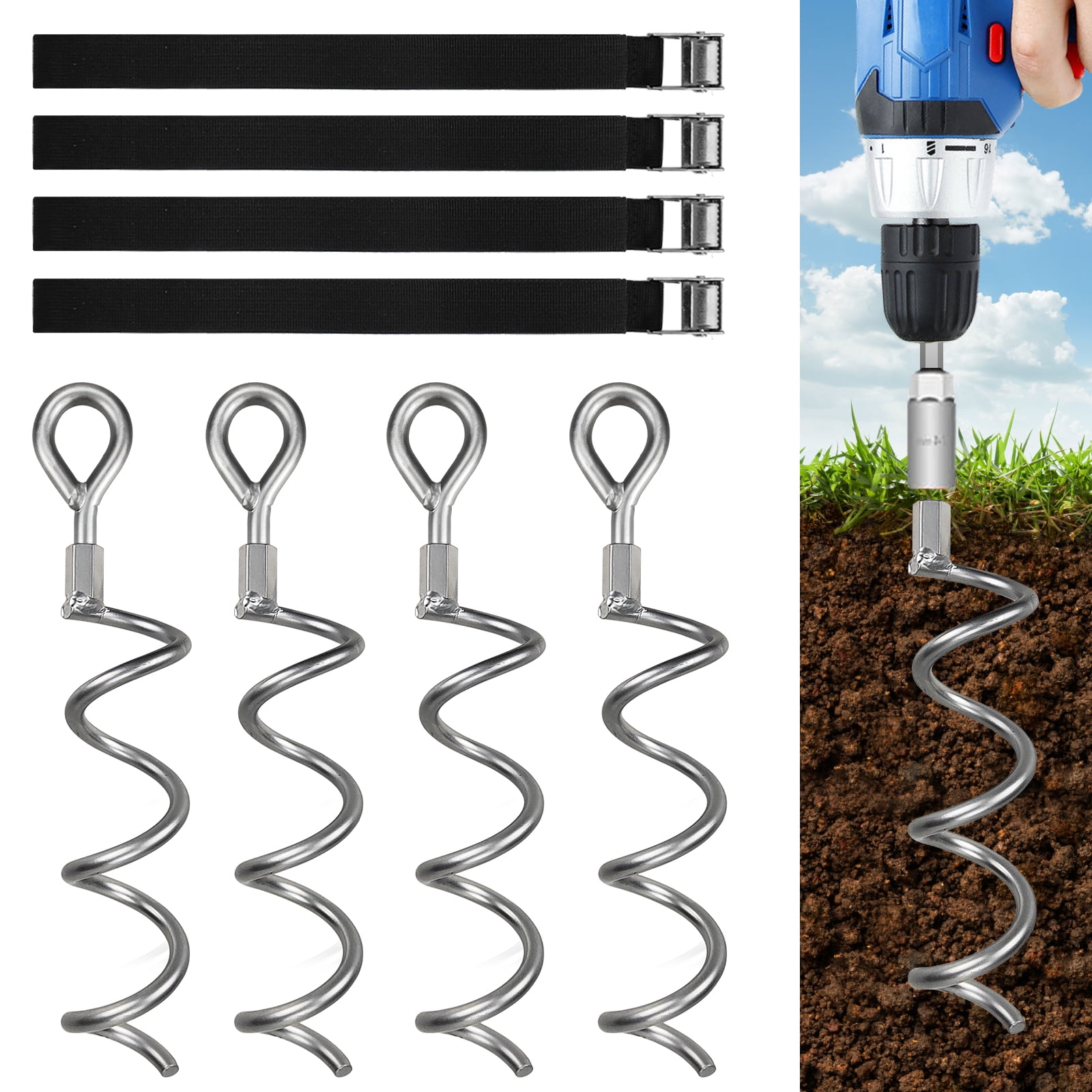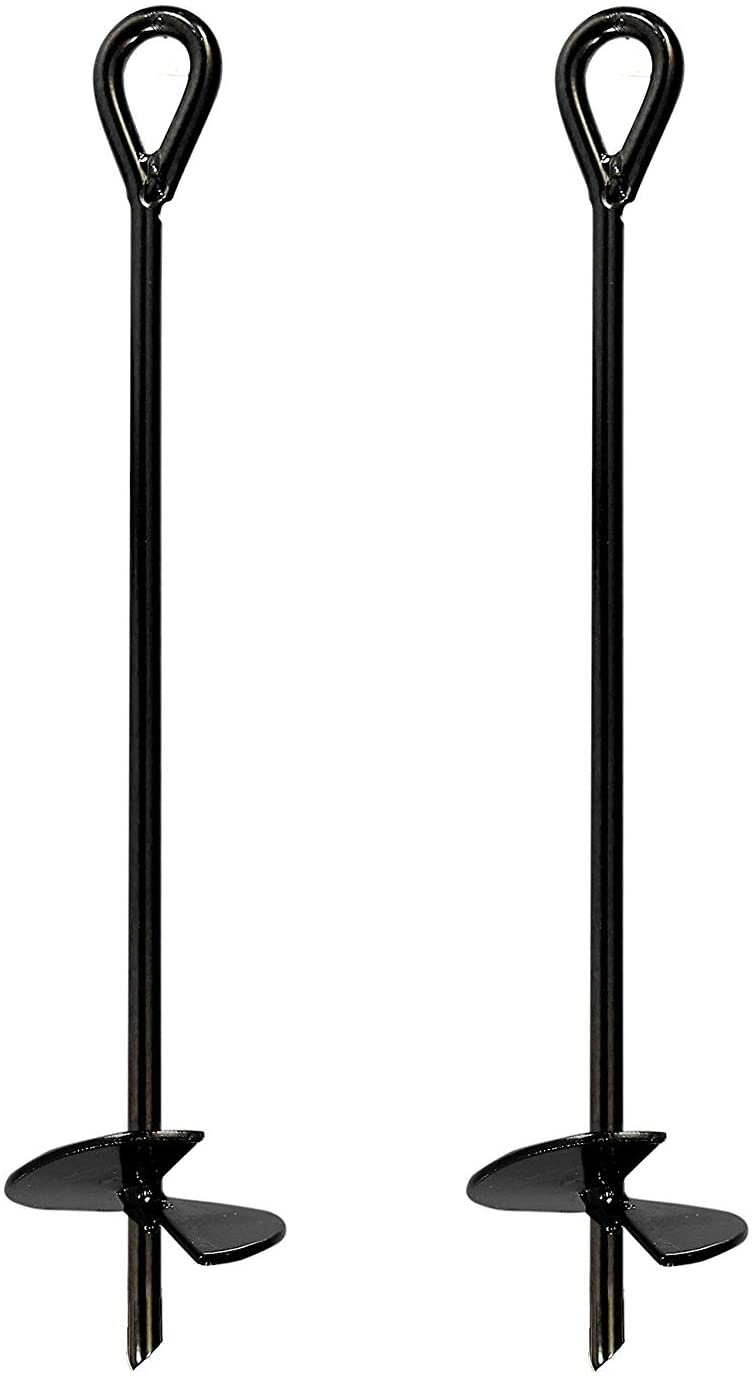Important Characteristics to Consider When Buying a High-Quality Ground Anchor
Important Characteristics to Consider When Buying a High-Quality Ground Anchor
Blog Article
Check Out the Different Sorts Of Ground Anchor for Your Following Project
From auger supports, which succeed in varied soil problems, to stake anchors developed for momentary setups, the choices are numerous. Additionally, concrete and screw anchors present one-of-a-kind advantages in certain circumstances, while deadman anchors are tailored for applications needing resistance to side pressures.

Auger Anchors
Auger supports are a preferred choice in numerous construction and landscaping tasks due to their unique design and effective securing capabilities. These anchors contain a helical screw-like shaft that is driven into the ground, permitting a steady and safe and secure hold. The spiral design promotes easy setup and makes the most of resistance against lateral pressures, making auger supports particularly reliable in applications such as secure fencing, temporary structures, and erosion control.
The installment procedure of auger supports is reasonably straightforward. They can be by hand or mechanically mounted, depending on the size and called for deepness. This flexibility allows for their usage in varied dirt problems, from sandy to clayey terrains. Moreover, auger anchors can be quickly gotten rid of and reused, which adds to their cost-effectiveness and sustainability.
One of the significant benefits of auger supports is their ability to disperse loads uniformly throughout the bordering soil, decreasing the risk of dirt disturbance and minimizing environmental effect. In addition, they are much less vulnerable to loosening up or heaving gradually contrasted to standard anchoring approaches. As a result, auger supports are an exceptional selection for jobs needing dependable and durable anchoring remedies.

Stake Anchors
When it comes to securing structures in a variety of exterior applications, stake anchors provide a straightforward and trusted service. These anchors are generally built from durable materials such as steel or light weight aluminum, designed to stand up to environmental stress and anxieties while supplying optimal security. Their straightforward design permits quick setup, making them an ideal choice for short-term or permanent anchoring requirements.
Risk supports are particularly useful in protecting camping tents, covers, and other light-weight structures against wind and weather condition. They work by being driven right into the ground at an angle, developing a solid hold that stands up to pull-out pressures - Ground Anchor. The performance of stake anchors depends upon a number of elements, consisting of soil type, dampness content, and the angle of installation
For added protection, many risk anchors come with accessory factors for ropes or bands, permitting tension modifications as essential. In applications such as landscape design or building, they can successfully support tools or structures on unequal terrain. Generally, risk supports offer a cost-efficient and flexible remedy for securing different outdoor setups, making them a preferred selection for contractors and do it yourself fanatics alike.
Concrete Anchors
Concrete supports provide a robust option for safeguarding structures to concrete surface areas, making certain security and safety in numerous applications. These supports are necessary for tasks varying from property building and constructions to large industrial installations. They can be found in various kinds, consisting of development supports, adhesive anchors, and undercut supports, each designed for specific tons demands and environmental conditions.
When mounted,Growth anchors rely on mechanical devices to grasp the concrete. They are ideal for medium to heavy-duty applications. Adhesive anchors utilize high-strength epoxy or material to bond the anchor to the concrete, offering remarkable load-bearing abilities, especially in split concrete circumstances. Undercut anchors create an one-of-a-kind shape within the concrete, giving exceptional holding power, especially in applications where tensile lots prevail.
When performed properly, concrete supports significantly enhance the structural honesty of various projects, making them important in modern-day building practices. Recognizing the specific needs of your job will assist in choosing the ideal type of concrete anchor for the job.
Screw Anchors

Screw supports are a versatile securing solution that can be properly used in a selection of applications where conventional concrete supports might not be adequate. These supports include a helical design that permits them to be quickly driven into the ground, making them suitable for use in soil and other substrates. Their special framework supplies exceptional holding power and resistance to pull-out forces, making them appropriate for various tasks, from landscape design to structural support.
Among the primary advantages of screw supports is their ease of setup. They call for minimal tools and can commonly be mounted without the need for excavation, which conserves both time and labor costs. Additionally, screw supports can be eliminated and recycled, providing a lasting option for short-term applications.
Screw anchors are particularly valuable in locations where soil problems are testing, such as loosened or sandy soils. Their capacity to be installed at varying midsts enables modification based upon specific job demands. Overall, screw anchors offer a reputable and efficient securing technique, making them an exceptional choice for engineers and contractors looking for efficient services for their jobs.
Deadman Anchors
Deadman supports function as a robust service for maintaining frameworks in challenging problems, particularly where conventional anchoring techniques might fail. These anchors contain big, heavy objects buried underground, which create resistance versus lateral pressures. The click now design normally involves a horizontal component, such as a block of concrete or a metal plate, hidden in the dirt, to which straps or wires are attached.
The performance of deadman supports exists in their ability to disperse lots over a bigger area, reducing the risk of failure in unstable soil conditions. They are specifically useful in applications such as keeping wall surfaces, short-lived structures, and incline stablizing, where dirt motion can jeopardize the honesty of the structure.
Installation of deadman supports needs careful preparation to guarantee they are put at the right depth and positioning, optimizing their load-bearing capability. While they may need even more labor and product than light-weight supports, their dependability in unfavorable conditions makes them invaluable for lasting jobs. Deadman anchors are versatile and can be adapted to different applications, making them a best selection for engineers encountering special difficulties in their jobs.
Verdict
In recap, choosing the ideal kind of ground support is essential for ensuring security and protection in various tasks. Auger supports stand out in varied soil problems, while stake anchors suit short-term applications. For concrete surface areas, expansion and glue anchors give dependable alternatives, and screw supports offer versatility in difficult terrains. Deadman supports are particularly efficient in withstanding side pressures for retaining wall surfaces. Cautious factor to consider of these options will improve project outcomes and architectural honesty.
Additionally, concrete and screw supports existing special advantages in certain scenarios, while deadman supports are tailored for applications requiring resistance to side pressures - Ground Anchor.Auger supports are a popular choice in numerous building and construction and landscaping tasks due to their unique layout and effective securing capacities. They come in various kinds, consisting of development supports, adhesive anchors, and undercut anchors, each made for particular lots needs and ecological conditions
Sticky supports make use of high-strength epoxy or material to bond the anchor to the concrete, providing superior load-bearing capabilities, specifically in fractured More Help concrete scenarios. Generally, screw anchors supply a reliable and reliable anchoring method, making them an outstanding option for contractors and designers looking for reliable services for their you can find out more projects.
Report this page